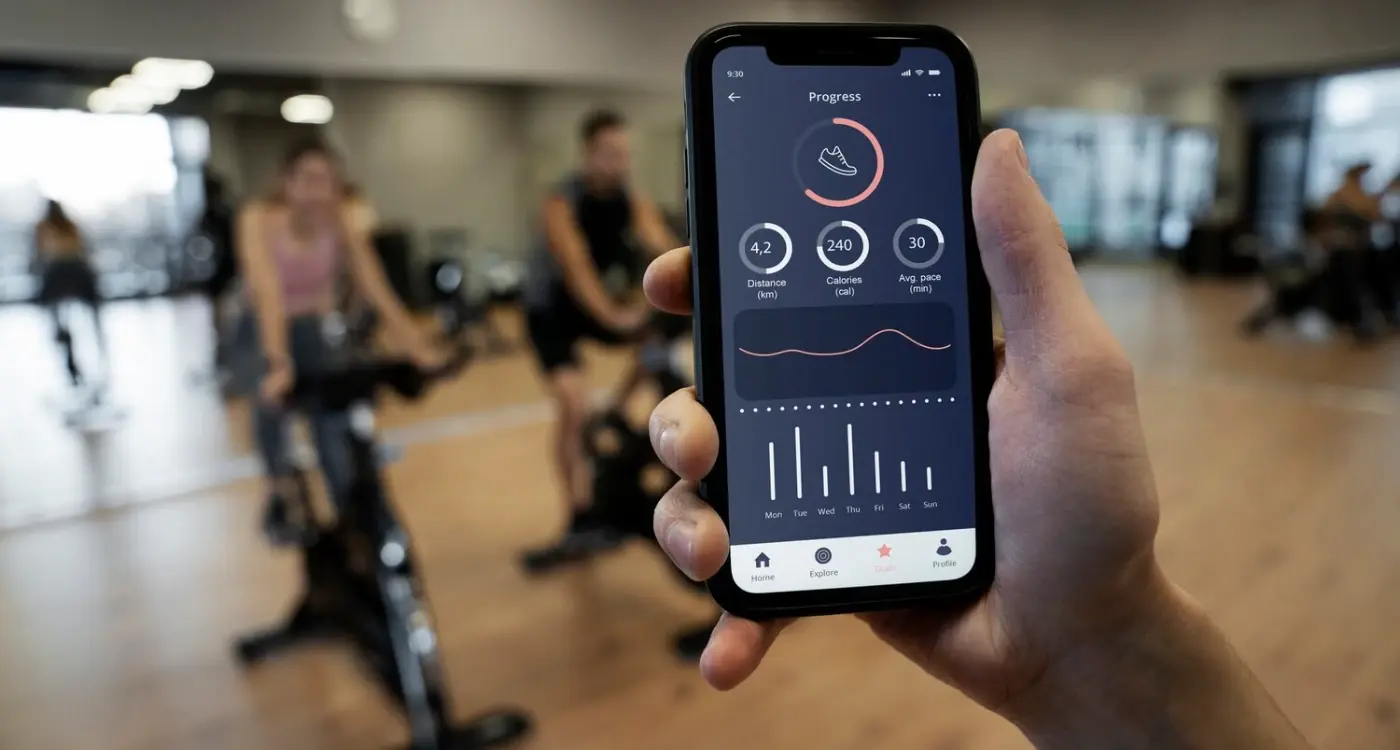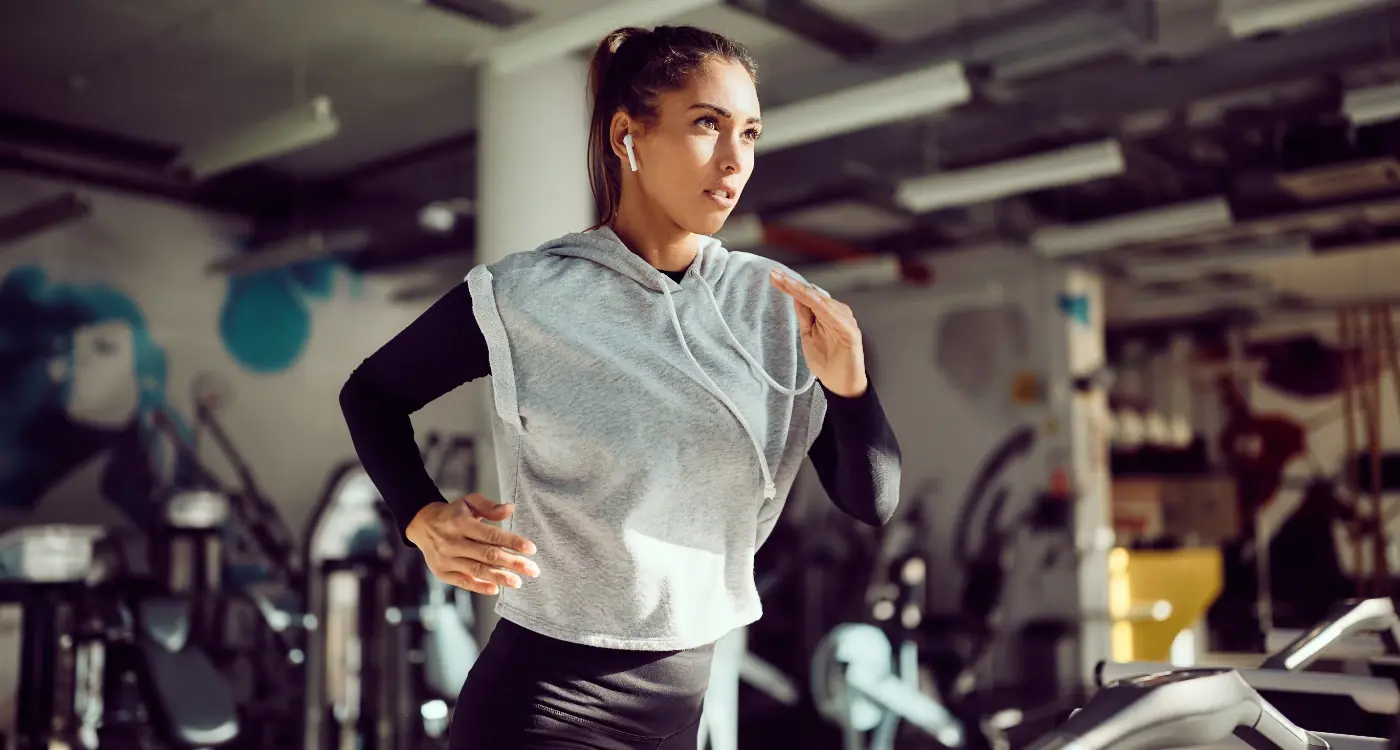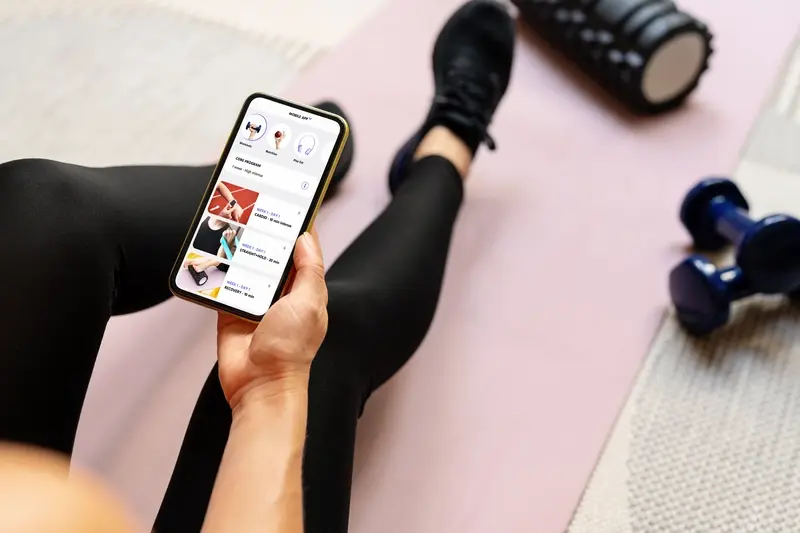How Do I Track Exercise Data Accurately in My Fitness App?
Here's a fact that will make you rethink your fitness app: studies show that 73% of health and fitness apps provide inaccurate exercise tracking data, yet users make important health decisions based on this information every day. That's a problem—and it's one we can fix.
I've been developing fitness apps for years now, and if there's one thing that keeps app developers (and users) frustrated, it's poor data accuracy. You know the feeling: your app says you've burned 500 calories during a 20-minute walk, but deep down you know something's not right. The truth is, accurate exercise tracking isn't just about having the latest sensors or fancy algorithms—it's about understanding how all the pieces fit together.
The difference between a fitness app that users trust and one they delete after a week often comes down to whether the data feels believable
Building accurate exercise tracking systems means getting your hands dirty with sensor selection, data validation, real-time processing, and user experience design. It's not enough to simply collect heart rate data or count steps; you need to understand what makes that data reliable and how to present it in ways that actually help people reach their fitness goals. This guide will walk you through each step of creating exercise tracking systems that your users can actually rely on—because at the end of the day, accurate health metrics aren't just nice to have, they're what keep people coming back to your app.
Understanding Exercise Data Types
When you're building a fitness app, you need to know what types of exercise data you can actually track. It's a bit like deciding what ingredients you want in your kitchen before you start cooking—you can't make a good meal without knowing what's available to work with.
The most basic data type is motion data, which comes from your phone's built-in sensors. This includes steps, distance travelled, and basic movement patterns. Your accelerometer picks up when someone is walking, running, or standing still; your gyroscope detects rotation and orientation changes. These sensors are already in every smartphone, which makes them perfect for starter fitness apps.
Heart Rate and Biometric Data
Then we've got biometric data—heart rate being the big one here. Some phones can read heart rate through their camera flash, but it's not brilliant for accuracy during exercise. Most serious fitness tracking happens through external devices like chest straps or fitness watches. You'll also see apps tracking sleep patterns, stress levels, and even blood oxygen levels these days.
Environmental and Performance Metrics
Location data gives you GPS tracking for outdoor activities; speed, elevation, and route mapping all come from this. Performance metrics include things like calories burned, workout intensity, and recovery time between sets. The tricky bit? Some of this data requires complex calculations rather than direct sensor readings.
Here's what most fitness apps end up tracking:
- Basic movement (steps, distance, active minutes)
- Heart rate and pulse data
- GPS location and route information
- Workout duration and intensity
- Calories burned (calculated, not measured directly)
- Sleep and recovery patterns
The key is choosing data types that match your app's purpose and your users' needs. More data isn't always better—sometimes it just creates confusion.
Choosing the Right Sensors and Hardware
Getting exercise tracking right starts with picking the right sensors—and there are more options than you might think. Your smartphone already has quite a few built-in sensors that can help with health metrics: accelerometers track movement, gyroscopes detect rotation, and GPS chips monitor location. But here's the thing: not all sensors are created equal, and knowing which ones to use (and when) makes all the difference for data accuracy.
Most modern phones include accelerometers and gyroscopes as standard, which work brilliantly for step counting and basic activity detection. The GPS sensor handles distance tracking for runs and walks, though it can be a bit patchy indoors or in built-up areas. Heart rate sensors are less common in phones but becoming more popular—though they're not always as accurate as dedicated fitness wearables.
Sensor Combinations for Better Results
The real magic happens when you combine multiple sensors. Using both accelerometer and GPS data together gives much more accurate distance measurements than either sensor alone. Some fitness apps even use the phone's camera and flashlight to measure heart rate by detecting blood flow changes in your fingertip.
- Accelerometer + Gyroscope = Better step counting and activity recognition
- GPS + Accelerometer = More accurate distance and pace tracking
- Barometer + GPS = Elevation tracking for hiking and cycling
- Heart rate sensor + Activity data = Comprehensive fitness monitoring
External Hardware Considerations
Sometimes phone sensors aren't enough, and that's where external hardware comes in. Chest straps give the most accurate heart rate readings, whilst fitness watches provide constant monitoring without draining your phone battery. The key is deciding what level of accuracy your users actually need—casual joggers might be happy with phone-based tracking, but serious athletes will want medical-grade precision.
Always test your chosen sensors across different phone models and operating systems. Android and iOS handle sensor data differently, and older devices might not have all the sensors you're counting on.
Building Accurate Data Collection Systems
Getting your data collection system right is where the rubber meets the road in fitness app development. I've worked on countless fitness apps over the years, and the ones that succeed are those that nail this part from the start. Your sensors and hardware might be top-notch, but without a solid system to collect that data properly, you're building on shaky ground.
The backbone of any good data collection system is consistent sampling rates. Your app needs to decide how often it's going to grab data from sensors—too frequently and you'll drain the battery faster than you can say "workout complete," too infrequently and you'll miss those important peaks and valleys in performance. Most fitness apps work well with sampling rates between 1-50Hz, depending on what you're tracking.
Core Components of Your Collection System
Your data collection architecture needs several key pieces working together seamlessly. Think of it as a well-oiled machine where each part has a specific job:
- Data buffers to temporarily store information before processing
- Timestamp synchronisation across all sensors
- Error handling for when sensors disconnect or malfunction
- Background processing to keep collection running during phone calls
- Local storage backup for when internet connectivity drops
Managing Multiple Data Streams
Here's where things get tricky—most fitness apps aren't just tracking one thing. You've got heart rate, GPS location, accelerometer data, maybe even environmental sensors all feeding information simultaneously. Your system needs to handle these different streams without getting overwhelmed or creating bottlenecks that slow everything down.
The secret is building in redundancy and graceful degradation. When one sensor fails, your app should keep collecting from the others rather than crashing completely. Users don't want their 5K run data lost because their heart rate monitor decided to take a break halfway through.
Implementing Real-Time Data Processing
Real-time data processing in fitness apps is where things get properly technical—and it's absolutely critical for exercise tracking accuracy. When someone's running, cycling, or lifting weights, your app needs to process their health metrics instantly, not five minutes later when they've already finished their workout.
The challenge here isn't just collecting the data; it's making sense of it as it comes in. Raw sensor data from accelerometers, heart rate monitors, and GPS units arrives in a constant stream that needs filtering, analysing, and interpreting on the fly. Your app has to distinguish between actual movement patterns and background noise, calculate pace changes, detect when someone stops for a break, and update calorie counts—all whilst the user is still exercising.
Processing Speed Matters
Most fitness apps process data in chunks every few seconds, but the best ones work much faster than that. When you're tracking a high-intensity interval workout, delays in processing can throw off your entire data accuracy. The user needs to see their current heart rate zone, not their heart rate from thirty seconds ago.
The difference between good and great fitness apps often comes down to how quickly they can turn raw sensor data into meaningful information for the user
Managing Battery Life
Here's the tricky bit—real-time processing uses battery power, lots of it. You need to balance processing frequency with battery consumption. Smart fitness apps use techniques like adaptive sampling rates, where they process data more frequently during active periods and slow down during rest phases. This approach maintains data accuracy whilst keeping the phone from dying mid-workout, which frankly defeats the whole purpose of exercise tracking in the first place.
Validating and Cleaning Exercise Data
Raw exercise data from sensors isn't always reliable—and that's putting it mildly! Heart rate monitors can spike randomly, GPS can drift indoors, and accelerometers sometimes register phantom movements. Your fitness app needs robust validation systems to catch these errors before they reach your users.
Start with basic range checking. A heart rate reading of 300 BPM or a running speed of 50 mph clearly indicates sensor malfunction. Set realistic boundaries for each data type and flag anything outside these limits. GPS coordinates that jump hundreds of metres between readings? That's your cue to smooth the data or discard obvious outliers.
Common Data Issues to Watch For
- Sudden spikes in heart rate readings during rest periods
- Negative elevation changes that don't match terrain
- Step counts that register while driving or cycling
- GPS drift creating unrealistic distance calculations
- Sensor disconnections causing data gaps
Implement smoothing algorithms for noisy data streams. Moving averages work well for heart rate monitoring, whilst GPS coordinates benefit from Kalman filtering to reduce positional errors. Don't be afraid to interpolate missing data points—a brief sensor dropout shouldn't ruin an entire workout session.
Real-Time vs Batch Processing
You'll need both approaches. Real-time validation catches obvious errors immediately and can alert users to sensor problems during workouts. Batch processing after exercise completion allows more sophisticated analysis—comparing workout patterns against historical data to identify anomalies that might indicate equipment issues or unusual activity patterns. This dual approach keeps your fitness app's data accurate whilst maintaining smooth user experience.
Displaying Data Clearly for Users
Getting your exercise tracking data right is only half the battle—the other half is showing it to users in a way that actually makes sense. I've worked on countless fitness apps over the years, and the ones that succeed are those that present health metrics in a format people can instantly understand and act upon.
Your users don't want to stare at raw numbers or complicated charts when they're checking their workout progress. They want quick, digestible information that tells them whether they're improving or not. Think simple progress bars for weekly goals, clear before-and-after comparisons, and colour-coded indicators that show when they've hit their targets.
Making Numbers Mean Something
Raw data accuracy means nothing if users can't interpret what they're seeing. A heart rate of 145 BPM during exercise might be excellent for one person and concerning for another. Your app needs to contextualise these health metrics based on the individual user's profile, fitness level, and goals.
I always recommend using visual cues over text wherever possible. Charts work brilliantly, but keep them simple—line graphs for progress over time, circular progress indicators for daily goals, and trend arrows to show whether performance is going up or down.
Timing Your Data Updates
Real-time updates during workouts need to be balanced with readability. Users shouldn't be overwhelmed with constantly changing numbers, but they do want to see their current status. Update key metrics like heart rate every few seconds, but save detailed breakdowns for post-workout summaries.
Group related health metrics together on the same screen—putting heart rate, calories burned, and workout intensity side by side helps users understand how these data points connect to their overall performance.
Remember, your exercise tracking system is only as good as your users' ability to understand and use the information you're providing them.
Maintaining Long-Term Data Accuracy
Building a fitness app that tracks exercise data accurately is one thing—keeping it accurate over months and years is quite another. I've worked on fitness apps where the data started brilliantly but gradually became less reliable as time went on. Users would complain that their step counts seemed off or their heart rate readings didn't match their other devices.
The biggest challenge you'll face is sensor drift. This happens when the sensors in phones and wearables slowly become less accurate over time. Temperature changes, physical wear, and software updates can all affect how sensors perform. Your app needs to account for this by regularly checking if the data still makes sense compared to what you'd expect from similar users.
Regular Calibration and Updates
Smart fitness apps include calibration features that let users reset their baseline measurements. This might mean asking someone to walk a known distance to recalibrate their step counter, or comparing heart rate data against manual pulse checks. You should also monitor your app's performance through user feedback and analytics—if lots of people suddenly report inaccurate readings, there might be a problem with a recent update or a specific device model.
Data Consistency Checks
Your app should regularly audit stored data for inconsistencies. Here are the key areas to monitor:
- Unusually high or low readings compared to user history
- Missing data gaps that might indicate sensor problems
- Readings that don't match across different data types
- User-reported issues with specific workouts or time periods
Remember that maintaining accuracy isn't just about the technology—it's about building trust with your users. When they know your app consistently provides reliable data, they're more likely to stick with it long-term.
But beyond technical considerations, it's worth understanding the broader ethical implications of collecting so much personal health information. The ethics of data collection in health apps becomes increasingly important as these applications become more sophisticated.
Conclusion
Building accurate exercise tracking into your fitness app isn't a simple task—but it's absolutely worth getting right. Throughout this guide, we've covered everything from choosing the right sensors to cleaning messy data, and each step plays a part in creating something people will actually trust with their health metrics.
The truth is, users can spot inaccurate data straight away. When someone runs five kilometres and your app says they've done three, or when their heart rate reading looks completely wrong, they'll switch to something else faster than you can say "calibration error." That's why focusing on data accuracy from day one is so important; it's not something you can bolt on later.
What I find most rewarding about working on fitness apps is seeing how proper exercise tracking can genuinely help people. When the data is right, users make better decisions about their workouts, their recovery, and their overall health. They start to trust the numbers, which means they trust your app.
Remember that accuracy isn't just about the technical bits—though those matter enormously. It's about the whole experience, from how you collect the data to how you show it to users. Get the sensors working properly, clean up the noisy readings, validate everything twice, and present it all in a way that makes sense.
Your users are counting on you to get their exercise data right. Don't let them down.
Share this
Subscribe To Our Learning Centre
You May Also Like
These Related Guides

How Do I Design Apps for Gyms and Fitness Studios?

What Features Should My Workout App Have To Keep Users Motivated?



